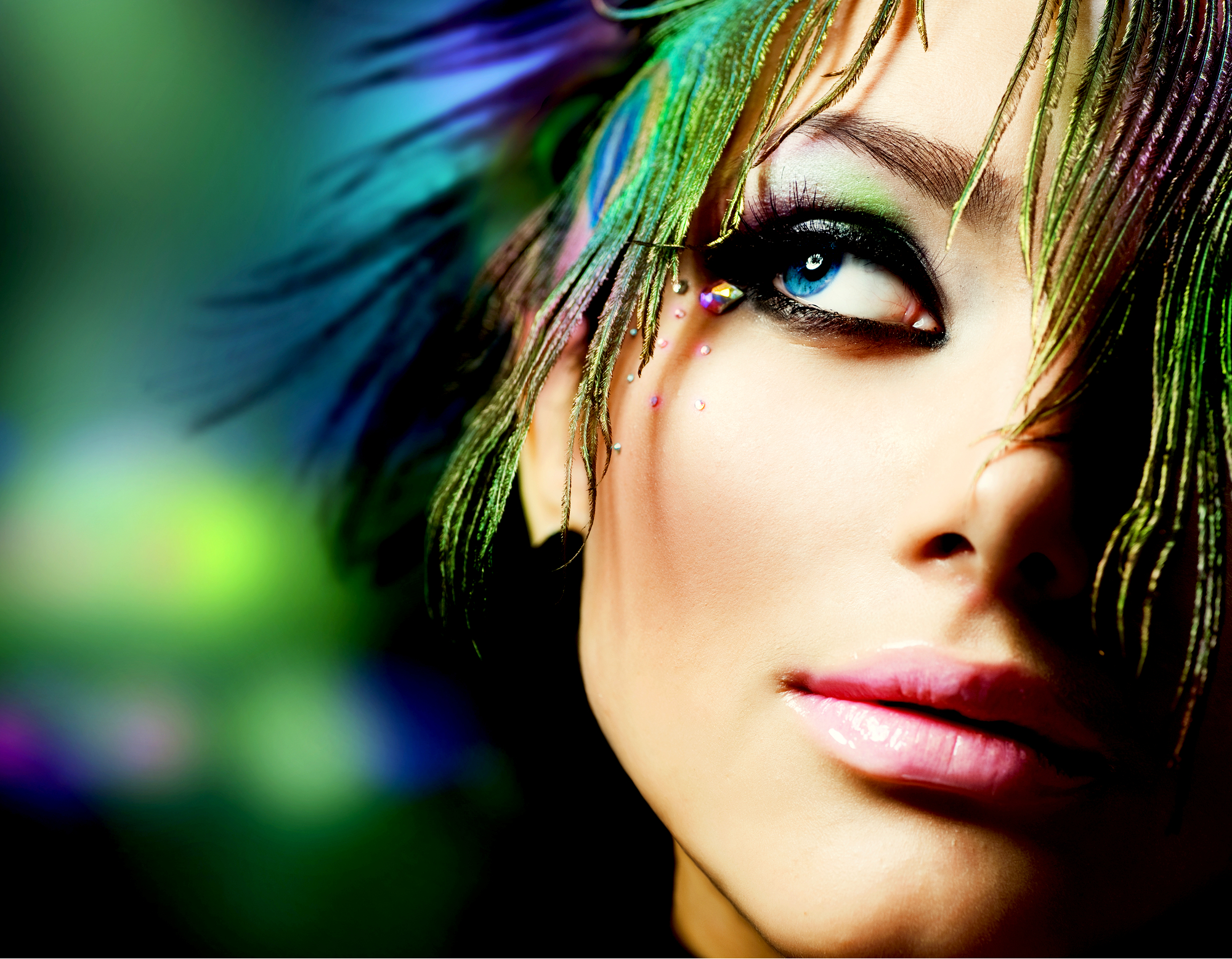Your eye colour is based on your genetics. The iris, the coloured part of your eye, varies from light brown to black, depending on the concentration and the density of the stroma (the fibres that connect the iris to the rest of the eye).
Blue eyes aren’t actually blue. If you cut open an eye and had a look inside, you’d see no blue pigment. Unlike brown eyes, blue eyes have low concentrations of melanin in the stroma, which lies in front of the dark epithelium.
People have blue eyes for the same reason that the sky is blue.
Brown eyes are the result of high levels of melanin in the stroma of the iris. The variety of shades of brown seen in people’s eyes is the result of varied levels of melanin, along with some Rayleigh scattering. More scattering results in hazel eyes, while less results in dark brown eyes. The majority of people in the world have brown eyes.
Green eyes are a curious blend of light brown pigmentation, a yellowish lipochrome pigment, and a splash of Rayleigh scattering. Multiple gene variants can produce green eyes in children. While brown eyes are in the majority globally, in Ireland and Scotland, 86% of people have either blue or green eyes.
What colour are your eyes?
Can a person have purple eyes?
Sometimes people’s eyes can appear purple. In cases of albinism (albino), melanin in the iris is so low that you can see the blood vessels. This can causes eyes to look red or purple in the right light. Also, people with very deep blue eyes can appear to have purple eyes in the right conditions.
Which eye colour is rarest?
Green eye colour is the rarest in the world. Only 2% of people globally have green eyes. Most of them are in Ireland, Scotland and Northern Europe.
Can your eyes change colour?
As the perception of colour depends on viewing conditions so does the perception of eye colour. The amount and kind of illumination, as well as the hue of the surrounding environment can make eyes appear to change colour.
Your mood can also change your eye colour. As the muscle that controls your pupil stretches in response to emotions like love or anger, the concentration of pigment changes, making your eyes change colour subtly.
Most babies are born with blue eyes because it takes time for the melanin to develop. Commonly, babies eyes darken over their first three years. In 10 to 15 percent of Caucasian people, eye colour can darken or lighten with age.
If your adult eye colour changes pretty dramatically, or if one eye changes from brown to green or blue to brown, it’s important to see your eye doctor. Eye colour changes can be a warning sign of certain diseases, such as Fuch’s heterochromic iridocyclitis, Horner’s syndrome or pigmentary glaucoma.
Eye Freckles
You can get freckles on your eye just like you get freckles on your skin. Usually harmless, you should keep an eye on (pun intended!) your freckles because in rare cases they can develop into melanoma.
In the iris, they appear as tiny flecks of colour. They’re only on the surface of your eye and don’t affect its shape. About half of all people have iris freckles. No one knows why some people have eye freckles and some people don’t, but like your eye colour, freckles can be genetic in origin.
If you have a light eye colour, you are at a higher risk of age-related macular degeneration at a younger age. So regular eye tests are very important for blue and green eyed people. But regardless of your eye colour, eye tests are a key part of maintaining happy and healthy eyes.



